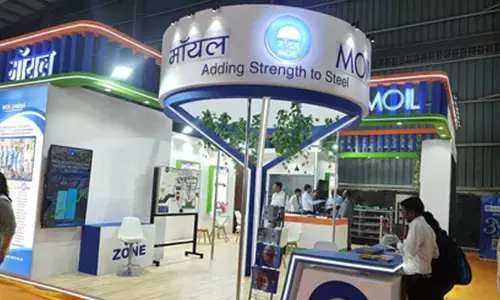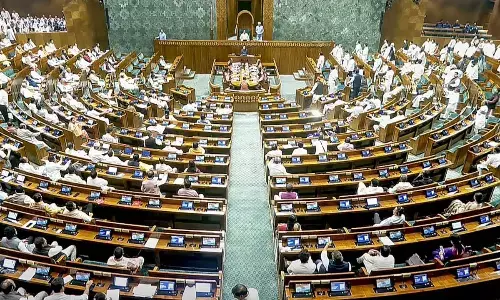GAIL to invest Rs 1.05 lakh crore to create infra for gas-based economy

GAIL India Ltd will invest Rs 1.05 lakh crore over the next five year to expand pipelines, lay gas distribution network and raise petrochemical production capacity, said Manoj Jain, its new Chairman and Managing Director.
GAIL India Ltd will invest Rs 1.05 lakh crore over the next five year to expand pipelines, lay gas distribution network and raise petrochemical production capacity, said Manoj Jain, its new Chairman and Managing Director.
GAIL India is the country's largest gas utility company.
Gas Pipelines Expansion and Strategy
Gas Pipelines expansion has been planned to take the fuel to the northeast regions as well as to the consumers in the South. The pipelines will be expanded under the government's push to raise the share of natural gas in India's energy basket to 15 per cent by 2030 from current 6.2 per cent.
Manoj Jain during his talk with reporters said, "We have planned a CAPEX of Rs 45,000 to Rs 50,000 crore in laying pipelines, Rs 10,000 crore petrochemical capacity expansions and another Rs 40,000 crore for city gas distribution (CGD) business."
GAIL's push for infrastructure creation is in line with Prime Minister Narendra Modi's vision of creating a gas-based economy that is less reliant on polluting fuels for meeting its energy needs.
GAIL is laying the infrastructure to help achieve that. GAIL currently operated 12,160 km of pipeline network and markets two-thirds of all-natural gas sold in the country. It will add about 7,000 km of pipeline length in the next five years, Jain said.
The company is scaling up on liquefied natural gas (LNG) import capacity. Besides owning a part of Petronet LNG Ltd, India's biggest liquid gas importer, it also owns and operates a 5 million tonnes LNG import facility at Dabhol in Maharashtra.
Jain added, "We have awarded the contract for construction of a breakwater at Dabhol to L&T and this should get completed in two-and-half-years. The completion will help operate the Dabhol terminal at its full capacity of 5 million tonnes per annum." Currently, operations are restricted during monsoon months as high tide could damage ships carrying gas in its liquid form.
Domestic gas production meets just half of the country's demand and the rest has to be imported.
Pipeline projects at hand include the ambitious Urja Ganga Project to take gas to Bihar, West Bengal, Odisha, and Jharkhand as well as Kochi-Kootanad-Bangalore-Mangalore line; and Indradhanush North East Gas Grid.
Besides pipelines, GAIL is also expanding city gas distribution (CGD) networks for retailing of CNG to automobiles and piped natural gas to household kitchens, he said, adding investments are also planned for the expansion of Pata petrochemical plant in Uttar Pradesh as well as converting an LPG recovery unit at Usar in Maharashtra into 5,00,000 tonnes Polypropylene plant.
GAIL is looking to put up 400 CNG stations and give out a record 10 lakh piped natural gas (PNG) connections to household kitchens in the next 3-5 years.
The company is building a 2,655 km-long gas pipeline from Jagdishpur in Uttar Pradesh to Haldia in West Bengal, Bokaro in Jharkhand and Dhamra in Odisha. Jagdishpur-Haldia & Bokaro-Dhamra Natural Gas Pipeline (JHBDPL) project, also known as the 'Pradhan Mantri Urja Ganga' project, was inaugurated by the Prime Minister in July 2015.
GAIL has commenced city gas operations in all the six geographical areas (GAs), including in Patna and Bhubaneshwar, that was awarded to it along the Urja Ganga route, Jain said.
The pipeline will be extended to Guwahati by laying an additional 750-km line. At Guwahati, it would interconnect with the upcoming 1,500-km 'Indradhanush' pipeline network conceived to operate in the northeast region by the public sector oil and gas majors. GAIL will also lay a 600 km Srikakulam-Angul natural gas pipeline.
India's Gas Consumption
India currently consumes nearly 160 million standard cubic meters of gas per day (mmscmd). This consumption has to rise to 600 mmscmd to reach 15 per cent share in the energy mix.



















